Who reached the Americas first? Some evidence believes that the first people in the Americas are called PaleoAmericans.
In “Textbook Story of How Humans Populated America is Biologically Unviable, Study Finds”, recently published in Ancient Origins, it was noted that DNA studies indicate that people could not have crossed the Beringia land bridge to enter the Americas 13,000 years ago because the “entry route was biologically unviable”. Although this finding by geneticists is surprising, it adds even more mystery to the archaeological evidence that anatomically modern humans were in South America tens of thousands of years before Ice Age people could have crossed a viable land bridge between Alaska and Siberia.
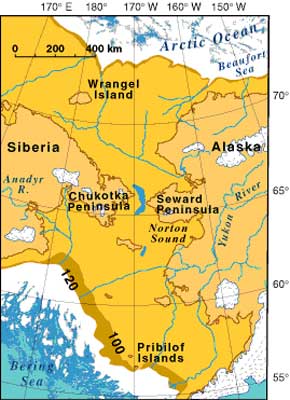
Bering land bridge. (Public Domain)
The earliest dates for habitation of the American continent to occur below Canada in South America are highly suggestive that the earliest settlers on the American continents came from Africa before the Ice melted at the Bering Strait and moved northward as the ice melted. An African origin for these people is a good fit because Ocean Currents would have carried migrants from Africa to the Americas, since there were no Ice Age sheets of ice to block passage across the southern Atlantic.
Important Archeological Sites
Dr. Bryan, in Natural History has noted many sites where PaleoAmericans have left us evidence of human habitation, including the pebble tools at Monte Verde in Chile (c.32,000 Before Present), rock paintings at Pedra Furada in Brazil (c.22,000 BP), and mastodon hunting in Venezuela and Colombia (c.13,000 BP). These discoveries have led some researchers to believe that the Americas were first settled from South America.
The main evidence from the ancient Americans are prehistoric tools and rock art, like those found by Dr. Nieda Guidon. Today archaeologists have found sites of human occupation from Canada to Chile that range between 20,000 and 100,000 years old. Guidon, in numerous articles claims that Africans were in Brazil between 65,000-100,000 years ago. Guidon also claims that man was at the Brazilian sites 65,000 years ago. She told the New York Times that her dating of human populations in Brazil 100,000 years ago was based on the presence of ancient fire and tools of human craftsmanship at habitation sites.
Martin and R. G. Klein, after discussing the evidence of mastodon hunting in Venezuela 13,000 years ago, observed that: “The thought that the fossil record of South America is much richer in evidence of early archaeological associations than many believed is indeed provocative…. Have the earliest hunters been overlooked in North America? “
Warwick Bray has pointed out that there are numerous sites in North and South America which are over 35,000 years old. A.L. Bryan noted that these sites include, the Old Crow Basin (c.38,000 BC) in Canada; Orogrande Cave (c.36,000 BC) in the United States; and Pedra Furada (c.45,000 BC) in Brazil.

Stone arch at Pedra Furada, Brazil. (Public Domain)
Using craniometric quantitative analysis and multivariate methods, Dr. Neves determined that Paleo Americans were either Australian, African or Melanesians. The research of Neves indicated that the ancient Americans represent two populations, PaleoAmericans who were phenotypically African, Australian or Melanesian and an Asiatic population that appears to have arrived in the Americas after 6000 BC.

Melanesian Blond girl from Vanuatu. (CC BY-SA 2.0)
Archaeologist have reconstructed the faces of ancient Americans from Brazil and Mexico. These faces are based on the skeletal remains dating back to 12,000BC. The PaleoAmericans resemble the first Europeans.
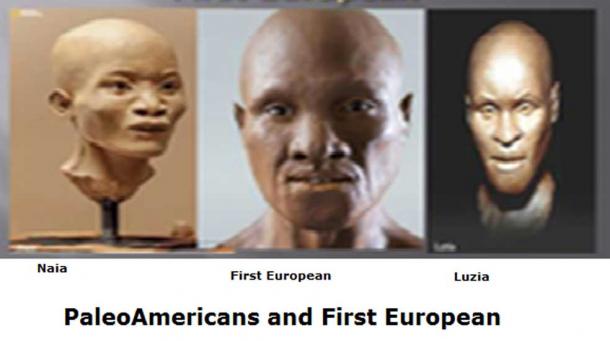
PaleoAmericans and First European
Researchers working on the prehistoric cultures of these ancient people note that they resemble the Black Variety of humanity, instead of contemporary Native Americans. The Black Variety include the Blacks of Africa, Australia, and the South Pacific.
Dr. Chatters, who found Naia’s skeleton, told Smithsonian Magazine that: “The small number of early American specimens discovered so far have smaller and shorter faces and longer and narrower skulls than later Native Americans, more closely resembling the modern people of Africa, Australia, and the South Pacific. “This has led to speculation that perhaps the first Americans and Native Americans came from different homelands,” Chatters continues, “or migrated from Asia at different stages in their evolution.”
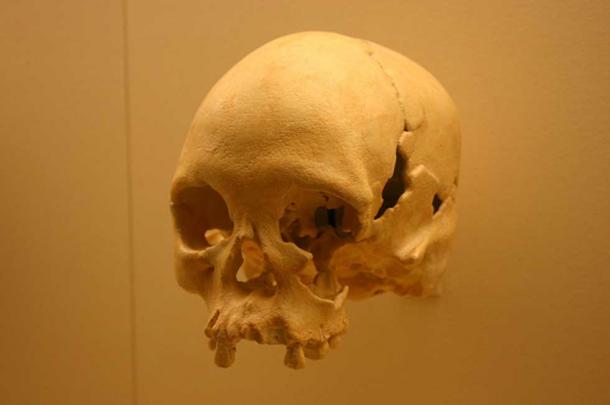
A cast of Luzia’s skull at the National Museum of Natural History. (CC BY-SA 2.0)
Although Dr. Chatters believes the PaleoAmericans came from Asia, this seems unlikely, because of the Ice sheet that blocked migration from Asia into the Americas. C. Vance Haynes noted that: “If people have been in South America for over 30,000 years, or even 20,000 years, why are there so few sites? [….]One possible answer is that they were so few in number; another is that South America was somehow initially populated from directions other than north until Clovis appeared”.
The fact that the Beringia land bridge was unviable 15,000 years ago make it unlikely that during the Ice Age man would have been able to walk or to sail from Asia to South America at this time. As a result, these people were probably from Africa, as suggested by Dr. Guidon.
Prehistoric Sea Travel
In summary, the land bridge between Siberia and Alaska was unviable before 13,000 BC. Even though man could not enter the Americas until after 14,000 years ago, man was probably in South America as early 100,000 years ago, according to Dr. Guidon’s research in Brazil.
The first people in the Americas are called PaleoAmericans. The research of Chatters and Neves indicate that the PaleoAmericans were not Asiatic. These researchers claim the PaleoAmericans, “more closely resembl[ed] the modern people of Africa, Australia, and the South Pacific.”
The first Americans probably came to the Americas by sea, due to the unviable land route to the Americas before 13,000 BC. As a result, we must agree with Guidon that man probably traveled from Africa to settle prehistoric America.
The archaeological evidence indicates that PaleoAmericans settled South America before North America, and that these Americans did not belong to the Clovis culture. Africa is the most likely origin of the PaleoAmericans, because the Ice sheet along the Pacific shoreline of North America, Siberia and Alaska, would have made the sea route from Asia or Europe unviable 65,000 years ago. The Dufuna boat dating back to 8,000 BC, shows that Africans had boats at this early date. The culture associated with the Dufuna boat dates back to 20,000 years ago.
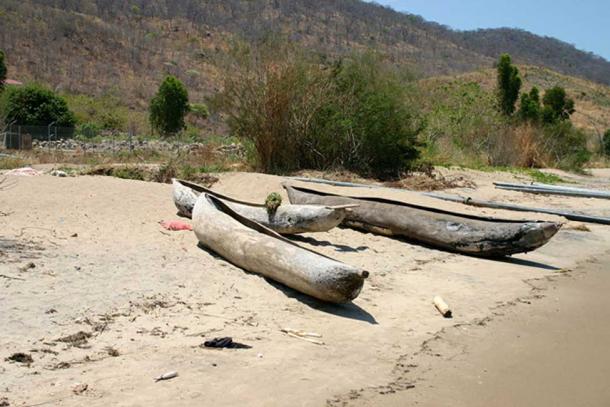
Dugout canoes hewn from wood at Lake Malawi, East African Rift system. (CC BY-SA 2.0)
Source: Ancient Origins

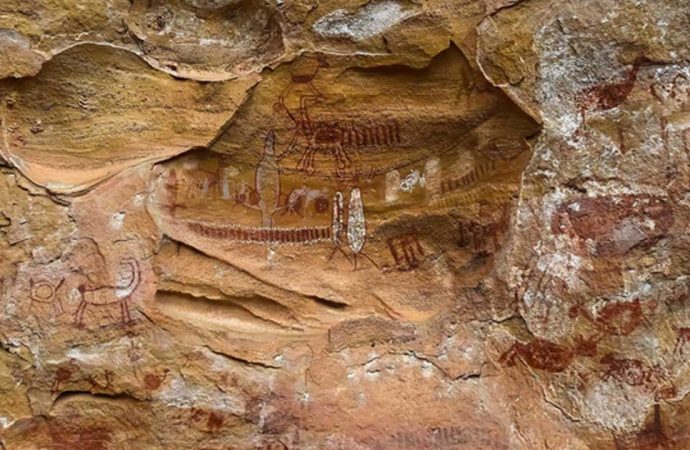































Leave a Comment
You must be logged in to post a comment.